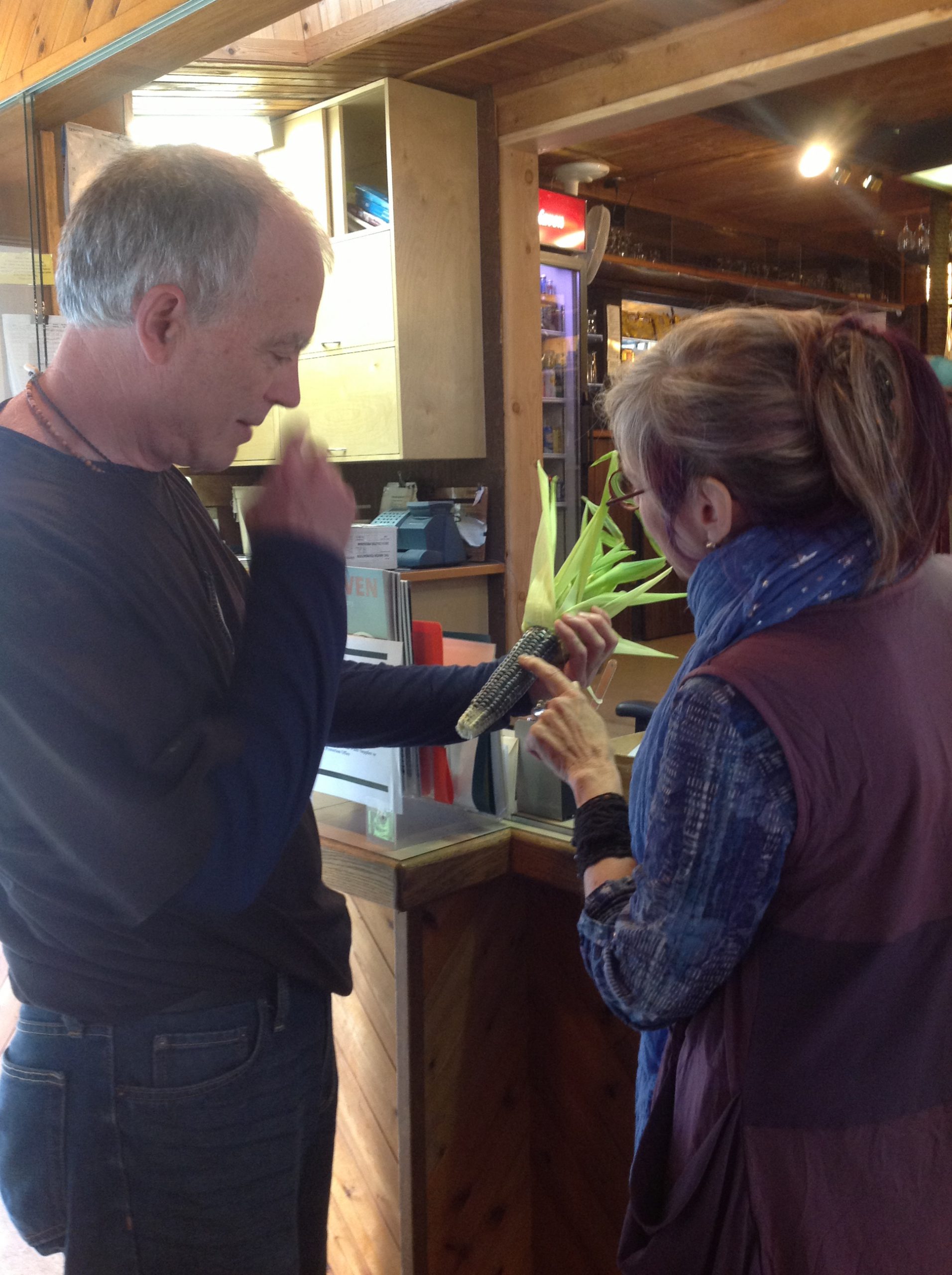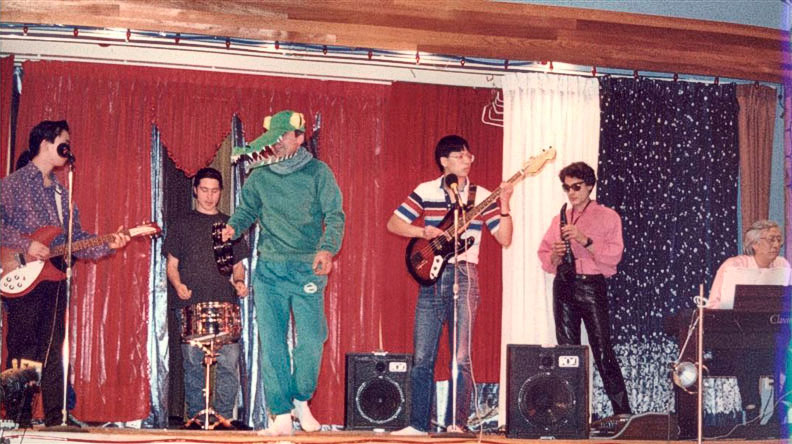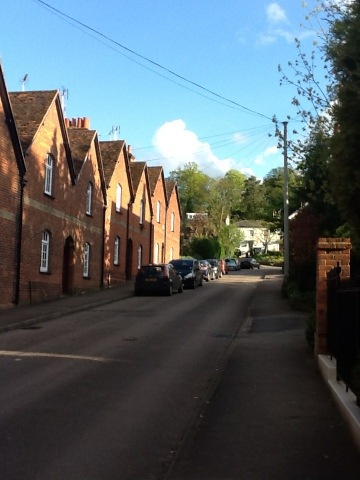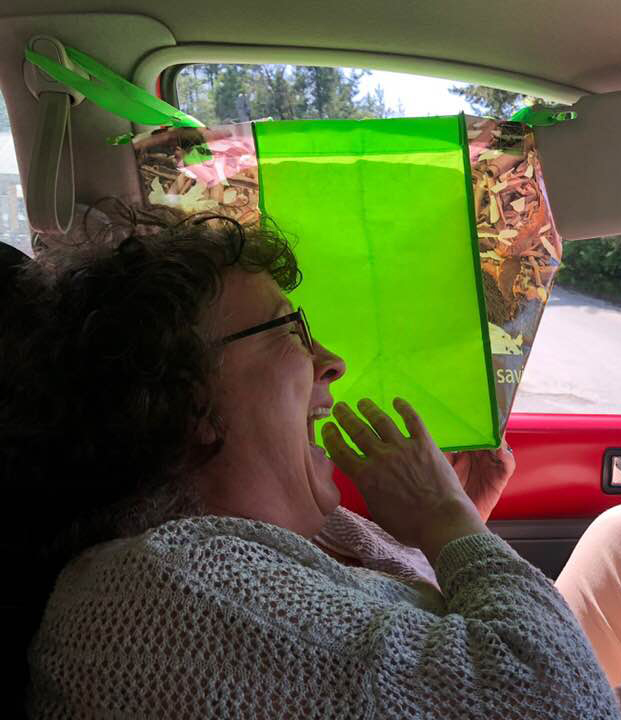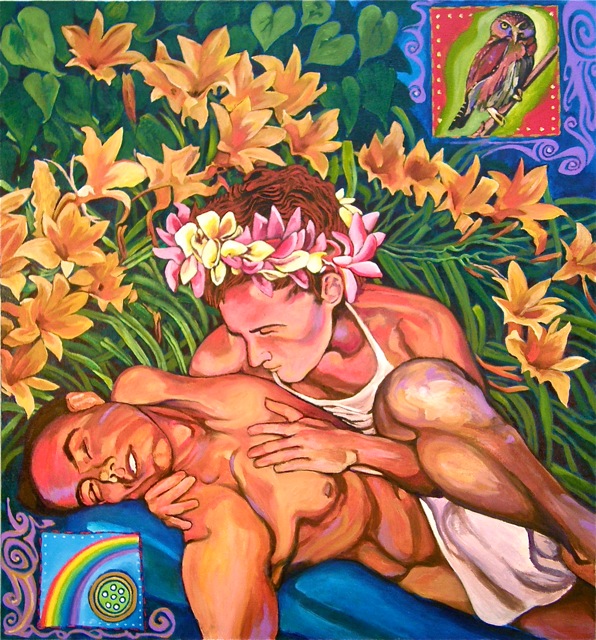The Corn Re-members: Hopi Corn from the Kelley Poole Garden
By Gary Dillon.
Aloha . . .
Thanks for sending this picture to me; I’m pleased that I had the impulse to bring it by that day to share the immediacy of the aesthetic & cultural impact of the beauty of corn-children such as these are.
I am aware that this reply about the corn comes to you in the midst of the moment when our community mourns Ben’s passing, and I send to you and to all my own sense of deep respect and gratitude for the man and for his legacy, which is completely indistinguishable from the scenes of daily life around here. Ben has truly become “an ancestor worth coming from.”
I’d like nothing better than to be able to tell the full story of the corn that has now grown one season at The Haven. And it is one of those things – simple & seemingly obvious though it may be – whose story surpasses ‘bits’ – even those that I could muster in my self-confidence as a story-teller. Even the ‘news’ that this is blue corn, or Hopi corn is a bit which in itself should properly lead to wonder. How is it that this particular corn, and its seed-form, has come to settle here on Gabriola?
This corn, it must be said first and foremost, has an ancestry. In this respect it is more amply, richly provided for than any of us are. The genetic integrity, fertility, and vitality of this corn has been maintained in the context of village life in the southwestern part of what is now the United States for close on two thousand years. That is an astonishing achievement in itself. And ‘keeping the knowledge intact’ about how to maintain this corn also required that the responsible human communities stay close, culturally, to a particular relationship with Time. We could name that relationship to Time – if we were so inclined – ‘ancestrally alert and ancestrally guided’ as responsible human beings; therefore also respectful of the Wild in nature and equally responsible to and for the thing that we have taken out of the Wild in nature (domesticated) for our food.
The immediate story of how this corn came to be here is this: two years ago I was given three small kernels of this blue corn at the conclusion of a Grand Ceremony on the Bonnechere River in Ontario, at the farm of Stephen Jenkinson (the ‘Griefwalker’). That Ceremony was an integral part of our collective effort as scholars to learn what might be asked of us in order to become ‘village-makers’ against all of the odds of the present day. The immediate purpose of that ceremony was to bury the placenta of a child recently born to parents who were among us, and to build over this spot a modest “field altar” of an antique variety. Many other grand and unexpected things were done there which I cannot begin to account for here.
The small kernels of that corn which were handed out that day had been nurtured there on that farm for three growing seasons from a similarly modest beginning – three or four kernels, given out in yet another ceremony. Only that other ceremony took place in New Mexico on the ranch that now houses what is known as ‘Bolad’s Kitchen’, the school of Martin Prechtel. And through Martin’s faithfulness, the knowledge of what growing the corn means, ancestrally and culturally, rides back in time to the Mayan elders of Santiago, Atitlan, in Guatemala. And through them there is an origin far back into an indigenously intact America.

The blue corn comes here possessed of its ancestry more firmly & more certainly than the human caretaker(s) (myself, mostly) who have looked after it here this summer. That is really the secret of its presence here: it was brought here as a ‘plant teacher’, and the teaching that may be discerned in its apparently fortuitous ‘landing’ in my hands has everything to do with Time, with Ancestry, with domestication and the Wild in nature, and with what it means to be a human being in regard to all of these things. Or, as I might also say, with remembering how to be a human being in relation to all of these, which have been more or less erased from view as a matter of ultimate concern in the present day.
To have taken on the responsibility of caring for this particular corn is to have been willing to care for, and wrestle with, everything that it carries from its having travelled through Time & been made to live & thrive by the willingness of people whose faces we have never seen & whose voices we have never heard. However, the corn ‘re-members’, and it whispers a truly strong and bracing story of cultural redemption in our ears. That, at least, is how I see it.

